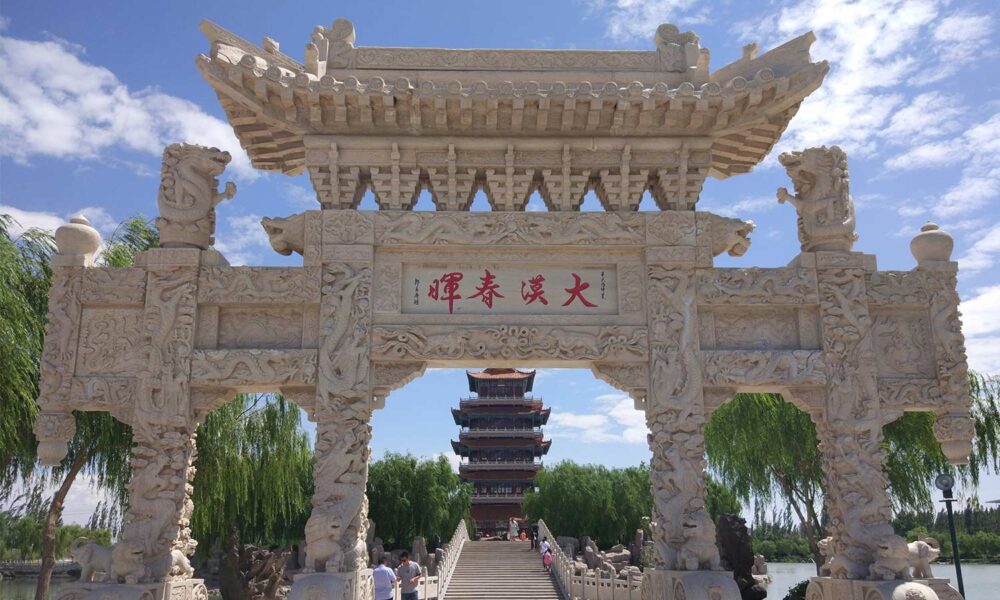Non-governmental open-source analysts recently revealed China is building 200-300 new missile silos near the cities of Yumen in Gansu Province, Hami in the Autonomous Region of Xinjiang and Hanggin Banner in the Autonomous Region of Inner Mongolia. And there may be more. I wonder if the people who live nearby know what is being built. I wonder how they feel about it.
The responsible Chinese officials, who knew the silos would be spotted, are not talking, yet. But sooner or later Chinese diplomats will explain why China is building them. Chances are they’ll blame the United States, the same way their communist forefathers did when they justified China’s decision to develop nuclear weapons in the first place.
This is a major achievement of the Chinese people in their struggle to increase their national defense capability and oppose the United States imperialist policy of nuclear blackmail and nuclear threats.
To defend oneself is the inalienable right of every sovereign state. And to safeguard world peace is the common task of all peace-loving countries. China cannot remain idle and do nothing in the face of the ever-increasing nuclear threat posed by the United States. China is forced to conduct nuclear tests and develop nuclear weapons.
From a statement by Peking on a Nuclear Test from an October 17, 1964 article appearing in the New York Times
China was much weaker then. It was a desperately impoverished and unstable nation governed by inexperienced peasant revolutionaries trying to recover from a century of foreign invasion and civil war. The United States was much more powerful then. It refused to recognize China’s communist government, embargoed its economy, and threatened to attack China with nuclear weapons during the Korean War and the Taiwan Strait Crisis.
China is much stronger today. It has a developing economy where out of 1.4 billion people, over 600 million still live on less than $150.00 per month. But China’s seat in the United Nations is secure, the rival government in Taipei is no longer a threat and the Chinese Communist Party, for all its faults, has created a modestly prosperous economy and a comparatively stable society that looks to the future with considerable promise.
US political and economic elites clearly feel threatened by China’s modest success and seem frustrated their Chinese counterparts pulled it off while remaining true to their communist roots. Since the Obama administration “pivoted” to Asia, US political, economic and opinion leaders are more critical of China’s government and more willing to restrict its economic and diplomatic opportunities. US officials now openly disregard the promises presidents Richard Nixon and Jimmy Carter made to China on Taiwan in 1972 and 1979. And the US government decided to intervene in China’s territorial disputes with its neighbors. Chinese leaders are worried about what they see as increasingly hostile US intentions.
But the chance the United States is going to launch a massive pre-emptive attack to wipe out China’s nuclear force is next to zero. China doesn’t need more nuclear weapons. In fact, It doesn’t need nuclear weapons at all and would gain more from unilaterally disarming than building up. The Cold War ended decades ago. Chinese leaders complain, with justification, about the antiquated “cold war mentality” driving US China policy. But their new missile silos are a product of the same psychology. The United Kingdom, France , Russia and the United States are all violating their treaty obligations by making major new investments in their nuclear arsenals. It seems China does not want to be left behind.
That’s not the justification we are likely to get from the Chinese Ministry of Foreign Affairs. Ministry officials are probably going to accuse the United States of adopting polices that make China’s existing nuclear force appear vulnerable to pre-emption. These concerns are understandable and not new. But it is hard to see how the decision to address them by dramatically expanding the size of China’s nuclear force and making it easier for Chinese leaders to counterattack quickly in a crisis will make China, or the world, any safer. The United States is unlikely to respond constructively, and the two sides will become caught in the familiar but seemingly irresistible trap of trying to use military means to solve a problem that has no imaginable military solution. It may not get as bad as the old nuclear arms race between the United States and the Soviet Union, but it will be just as stupid.
This is the first in a series of short posts that will try to walk through the twisted logic driving this new nuclear competition between the United States and China with an eye toward finding a diplomatic path out of it before things get dangerously out of control. There are alternative approaches that will benefit both countries and the world. Unfortunately, based on the hyperbolic reactions we’re hearing from the US Strategic Command and the US Congress, a new nuclear diplomacy doesn’t have much time to waste.
The featured photo in this blog is of a city park in Yumen, Gansu, near where China is constructing new nuclear missile silos.

